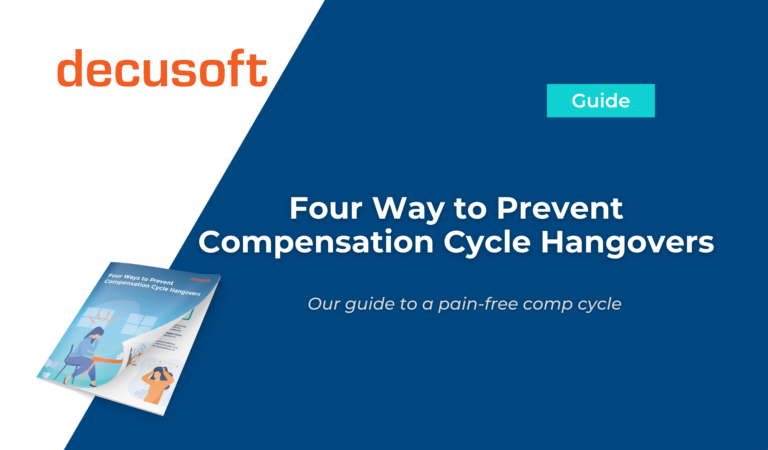A properly structured compensation plan is one of the most effective tools in the overall success of your company. The structure of a compensation plan can help or hinder your efforts to attract talent, encourage a desired set of behaviors and keep excellent employees on board.
Unfortunately, organizational leaders in nearly every industry have concerns about compensation. Many organizations struggle with some of the core issues, including:
- How to Compensate Employees: This includes the use of bonuses, stock options, pay-per-performance plans, and benefits.
- How Much to Pay Employees: Decisions seldom rooted in data and through analysis.
- Holding Down or Reducing Compensation: Cutting down on rates can work against the need to attract talent in the post-pandemic world.
Then there’s the issue of compensation cycles – the process of reviewing all the elements of compensation including salaries, benefits, equity, and incentives, and measuring it against both the company’s business strategy and the market. Implementing a cycle that balances what works to keep and attract talent, while focusing on the bottom line and pleasing all stakeholders, is challenging.
The Importance of Getting It Right
Compensation not only rewards individuals for their performance but also sends a message about the company culture, both inside and outside of the organization. It lets others know what’s important to the business. As Jack Welch, the former CEO of General Electric, said in his book Winning, “If you give peanuts, you get monkeys.”
Work is integral to an individual’s life. People want to enjoy where they work. Time and again, research has shown that employees value job fulfillment. This includes opportunities for growth, knowing they are contributing to something larger than themselves, and being fairly rewarded for their performance. A fair compensation package helps the employees remain engaged. Having a reward system like this makes them feel appreciated and shows them they are valued.
Creating an action plan is difficult enough without falling prey to the noise and misinformation that can lead compensation professionals down the wrong road. The myths surrounding compensation plans seem to have grown stronger with time. They’re typically fed by traditionalists who keep beating on the same drum because “that’s how we’ve always done it.”
To construct a good, and even great, compensation strategy you must discern what is true. Here are seven dangerous myths surrounding compensation cycles and what you should know about them.
- Myth: Surveys Let You Know How Much to Pay
Obviously, surveying the market can be helpful in determining a competitive pay structure. But in truth, it’s your organization and your compensation manager – or you – who set levels of compensation. You can use the data in your survey to learn the salary for an IT manager is in your market, for example, but you don’t have to pay the same rate. If your company provides a generous benefits package, you can make the IT manager’s salary lower.
- Myth: Labor Costs and Labor Rates Are the Same
Confusing labor rates with labor costs can lead to big compensation mistakes. Labor rates are simply straight wages divided by time. A Harvard Business Review article uses the example of a Wal-Mart cashier earning $5.15 per hour and a Wall Street attorney earning $2,000 a day.
Labor costs, on the other hand, are a calculation of what an organization pays employees and how much they produce. A factory worker in the U.S. producing bedroom slippers may be paid at a rate of $25 per hour, but one in China may only make $3 per hour. The workers’ relative costs reflect the output — how many slippers are produced within the same time period.
- Myth: People Work for Money
Of course, people work for money. They want to provide for themselves and their families and be able to enjoy the finer things life has to offer. At the same time, they work for social recognition and affirmation. They want praise and opportunities to socialize and network. They want to have fun at work. In the end, the belief that employees will stay as long as you pay them enough isn’t necessarily true. a misnomer. This is one of the many lessons of The Great Resignation. People want to enjoy their time at work and will look for places that will fulfill that need – even if they must take a pay cut to do it
- Myth: Incentive Pay Improves Performance
For salespeople who reach their quotas or are close to reaching them, incentive pay can work. But most of the time, it simply takes up an incredible amount of management’s time while leaving employees disengaged. Another Harvard Business Review article reported that in a survey of more than 13,600 employees, incentive pay resulted in lower job commitment and reduced trust in managers. In addition, performance-related incentive pay made employees feel pressured.
This tactic can actually backfire in terms of increasing employee engagement and attracting new talent. Surveyed employees said they didn’t believe that their pay is fairly tied to performance. Rather, they think it’s all about whom the managers and business leaders like more. Incentive pay, it turns out, undermines teamwork, and encourages a short-term focus on the incentive rather than performance.
- Myth: HR Makes Compensation Decisions
Depending on the size of the organization, compensation decisions are usually made by the chief financial officer, with input from the chief executive officer and, one hopes, a compensation committee. The belief that HR is responsible for compensation puts pressure on HR managers when, in fact, they’re usually only the messenger of the final decision regarding salaries.
- Myth: You Have to Pay Cost-of-Living Adjustments
Doing so will increase the organization’s fixed costs. The company already pays the employee based on market price and what the employee is worth. Any increases should be based on changes in the market rate or the internal value of the employee. For example, a newly earned college degree or completed skills training may increase their value.
By defining the base salary range for each position, you can adjust its value as the job responsibilities increase or skill sets change over time. When you award a cost-of-living increase to every employee, you commit funds from the budget that probably won’t provide a return on the investment.
- Myth: You Can Lower Labor Costs By Cutting Labor Rates
We have already established that labor rates and labor costs are different. This myth leaves productivity out of the equation and will eventually cost you more. Yes, if you replace a $1,500-per-week technical employee with a worker earning $600 per week, your labor costs will be reduced. However, you’ll evidently lose on the productivity side. In the long run, the replacement will end up costing you more than the $900 you saved.
Seek the Truth
Compensation professionals are constantly challenged to design reward packages that attract and retain quality talent – while staying within budget. Accomplishing this requires almost superhero powers. Strive to break common practices and refuse to fall for the myths. Base your organization’s pay standards on tried-and-true solutions. Question tradition and look to reward employees according to your company’s culture and talent needs. That will contribute to building a high-performance workforce.



